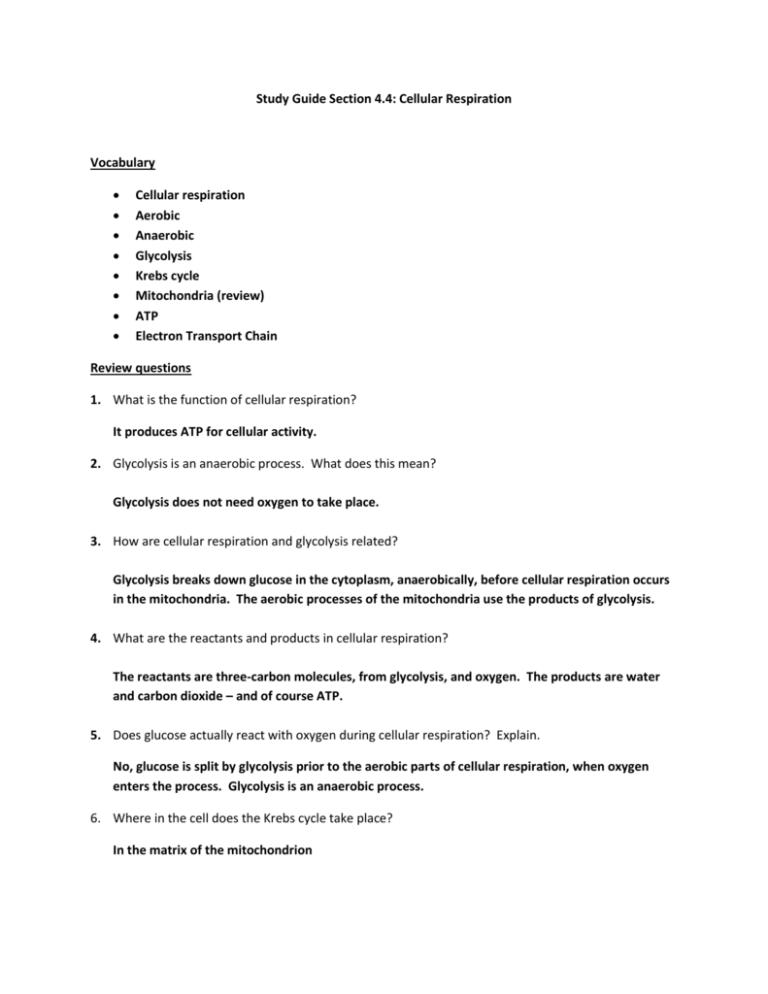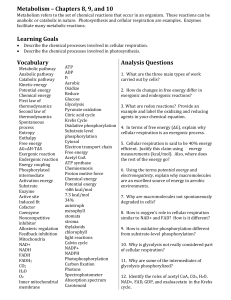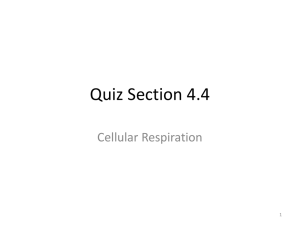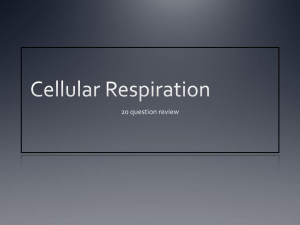Click here for Section 4.4 Study Guide
advertisement

Study Guide Section 4.4: Cellular Respiration Vocabulary Cellular respiration Aerobic Anaerobic Glycolysis Krebs cycle Mitochondria (review) ATP Electron Transport Chain Review questions 1. What is the function of cellular respiration? It produces ATP for cellular activity. 2. Glycolysis is an anaerobic process. What does this mean? Glycolysis does not need oxygen to take place. 3. How are cellular respiration and glycolysis related? Glycolysis breaks down glucose in the cytoplasm, anaerobically, before cellular respiration occurs in the mitochondria. The aerobic processes of the mitochondria use the products of glycolysis. 4. What are the reactants and products in cellular respiration? The reactants are three-carbon molecules, from glycolysis, and oxygen. The products are water and carbon dioxide – and of course ATP. 5. Does glucose actually react with oxygen during cellular respiration? Explain. No, glucose is split by glycolysis prior to the aerobic parts of cellular respiration, when oxygen enters the process. Glycolysis is an anaerobic process. 6. Where in the cell does the Krebs cycle take place? In the matrix of the mitochondrion 7. What are the products of the Krebs cycle? Carbon dioxide and energy carrying molecules. 8. Summarize the aerobic stages of cellular respiration. Be sure to discuss the Krebs cycle and electron transport chain in your answer. Your answers should indicate that the products of glycolysis are broken down by the Krebs cycle to make energy-carrying molecules and carbon dioxide. Energy from the Krebs cycle is used by the electron transport chain to make ATP. Detail is good in this answer; it shows that you understand cellular respiration. 9. Describe the relationship between cellular respiration and photosynthesis. Discuss the functions of chloroplasts and mitochondria. The reactants and products of the two processes are essentially the reverse of each other. The chloroplasts and mitochondria also have approximately opposite functions. Chloroplasts absorb energy and build carbon-based molecules while mitochondria break down carbon-based molecules to release energy. 10. Is the process of cellular respiration exothermic or endothermic? Explain your answer. Exothermic; energy is released as heat and ATP. 11. What is transferred to the chain of proteins in the electron transport chain? High energy molecules








